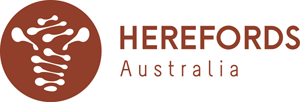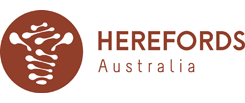The decision to stock the world’s biggest cattle station, Anna Creek, with Hereford and Black Baldy cattle was a huge vote of confidence in the whiteface market, according to breeders.
The South Australia station, measuring 2.36 million hectares, has been brought by the Williams Cattle Company from Kidman and Co.
The Williams family have been traditional Hereford breeders, supplying grain fed cattle into southern processor and live export markets.
The family have announced the gradual destocking of the station’s Santa Gertrudis-Shorthorn herd with 8000 surplus Poll Hereford and Black Baldy cattle from within their existing South Australian holdings.
Anna Creek, near Coober Pedy, has a capacity of around 14,000 head.
Williams Cattle Company grain finishes cattle at a Carrieton feedlot in SA’s Flinders Ranges.
The decision by the commercial powerhouse to service domestic beef markets with whiteface cattle from Anna Creek comes on the back of a single pastoral order for 10,000 whiteface cattle.
Poll Hereford breeder and former Herefords SA president Andrew Schwarz said the decision was “fantastic’’ news for the breed.
Mr Schwarz, of Senior, said it demonstrated confidence in the southern beef market and the breed’s ability to handle the arid environment.
“The Hereford offers carcase quality off grass and can be finished at a younger age without having to carry them through,’’ he said.
“They do respond quicker and put the weight on when the rain falls.
“It will be interesting to see how it plays out when the industry takes notice of what such a big player is doing.’’
Mr Schwarz said his local region had experienced the wettest winter in 40 years, resulting in good spring growth.
“The store markets have been excellent all year and are still strong – no one is complaining,’’ he said.
Herefords Australia vice chairman Lachy Day, Bordertown, said the decision was a “resounding vote of confidence in the breed’’.
“Those guys really know that country and how the Hereford cattle perform out there,’’ Mr Day said.
“They are professional beef producers and in their case it was an economic decision to run Herefords.
“It is a huge vote of confidence in the breed.’’
Mr Day said Herefords offered Meat Standards Australia compliance rates, fertility and doing ability in pastoral country.
He said good seasonal conditions through the pastoral country had resulted in South Australia selling out of bulls this year.
“There has been a big appetite for bulls, particularly from Broken Hill (in western NSW).’’
Tom Honner, Minlacowie Poll Herefords, Minlaton, said the Williams family were renowned for good cattle and the decision was a positive for the breed.
Familiar with the arid 100mm rainfall country in the north, Mr Honner said the region had among the lowest stocking rates in Australia.
He said a unique type of beast was required for the environment, and it was important for managers to understand when to sell or hold cattle.
“Herefords are well suited to the environment as they are the first to get fat when the feed does come, and they are the last animal to go poor when the season cuts out,’’ Mr Honner said.
“The Hereford fertility is unquestioned and they produce more calves than any other breed.
“The Hereford is the first cow cycling after a rain while other breeds are too low in condition – when Hereford cows are pregnancy tested in that country you can be they are in calf.
“The best cattle are the ones born and raised there rather than bringing in surplus females from other states.
“The cattle are mustered only twice a year so a good temperament is important.’’
Mr Honner said pastoral buyers sought bulls with structural soundness, width at the hips, good eye set, and with growth.
“The severity of the country will restrict growth in an average year so the growth can’t be too moderate.’’





